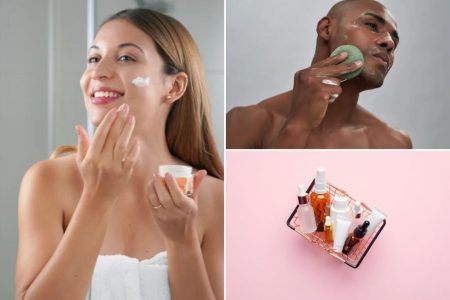The upcoming total solar eclipse is a cosmic event that many people are eagerly anticipating, especially those in the United States who will be in the path of totality. As people prepare for this extraordinary experience, they may want to consider what colors to wear on the day of the eclipse to enhance their viewing experience. According to the experts at Solar Eyeglasses, the colors you wear during the eclipse can have an impact on how you perceive the celestial phenomenon.
Solar Eyeglasses explains that as the eclipse darkens the surroundings, our eyes switch to rod cells, which are better for low light conditions. This transition affects how we see colors, leading to a decrease in vibrancy and saturation. The mesopic vision zone, just before totality, is a unique space where colors may appear differently. To maximize the visual impact during this phase, experts recommend wearing red and green hues to help colors pop as light levels decrease.
While colors like red and green are recommended for enhancing the eclipse experience, neutral tones like black, white, gray, or brown are discouraged. These neutral colors may blend into the eclipse’s shadow and prevent viewers from fully appreciating the phenomenon. By wearing colorful clothing during the eclipse, you can take advantage of the Purkinje effect, which causes certain colors to appear more vivid in low light conditions like those during an eclipse.
Dr. Gordon Telepun, an eclipse chaser and NASA educator, supports the sartorial advice by emphasizing the visual impact of wearing color during the mesopic zone. The Purkinje effect, which intensifies during an eclipse, alters how we perceive colors, making them appear darker or brighter depending on their hue. By considering this effect and choosing vibrant colors like red or green for eclipse viewing, you can enhance your experience and capture stunning photos that reflect the unique lighting conditions of an eclipse.
As the total solar eclipse approaches, people across the United States are preparing to witness this rare astronomical event. With millions of individuals expected to experience the eclipse, it is essential to take proper precautions to protect your eyes during the partial phases of the event. By wearing certified eclipse glasses or using handheld solar viewers, you can safely observe the sun without risking eye damage. This meticulous preparation ensures that you can fully enjoy the eclipse without any negative consequences.
Looking ahead, the next total solar eclipse is scheduled for August 12, 2026, with totality visible in locations such as Greenland, Iceland, Spain, Russia, and a portion of Portugal. While the upcoming eclipse on April 8, 2024, will provide a spectacular display for millions of viewers, it is always important to prioritize safety when observing solar events. By following expert guidance and planning ahead, you can make the most of this rare celestial occurrence and create lasting memories of this awe-inspiring natural phenomenon.













